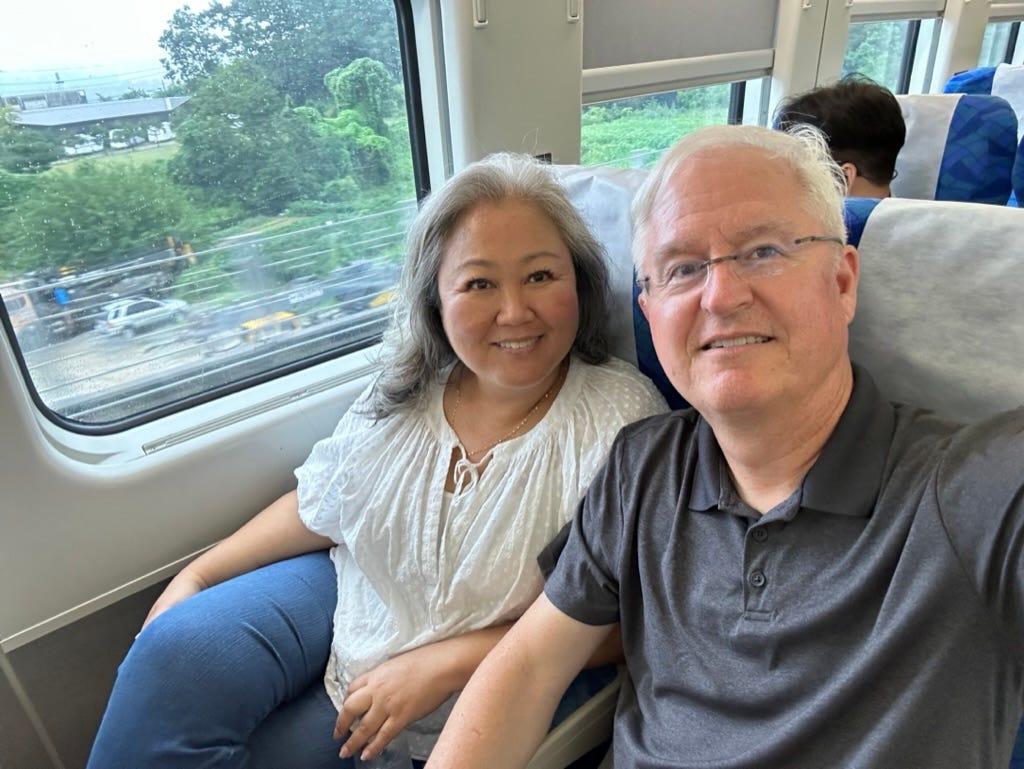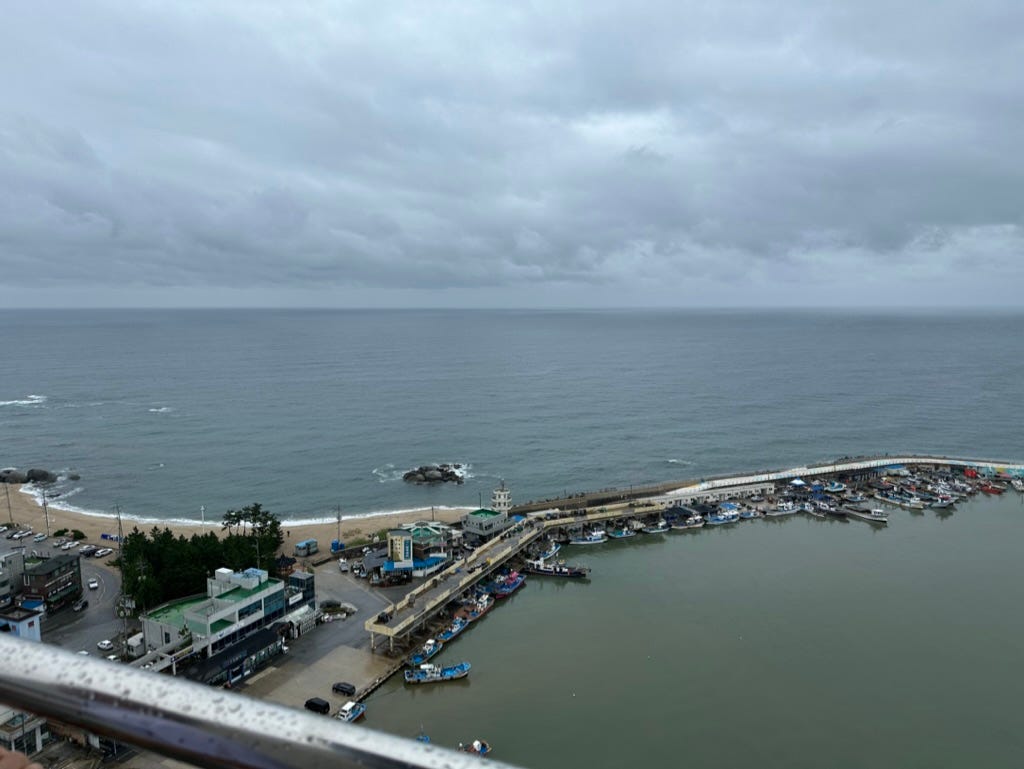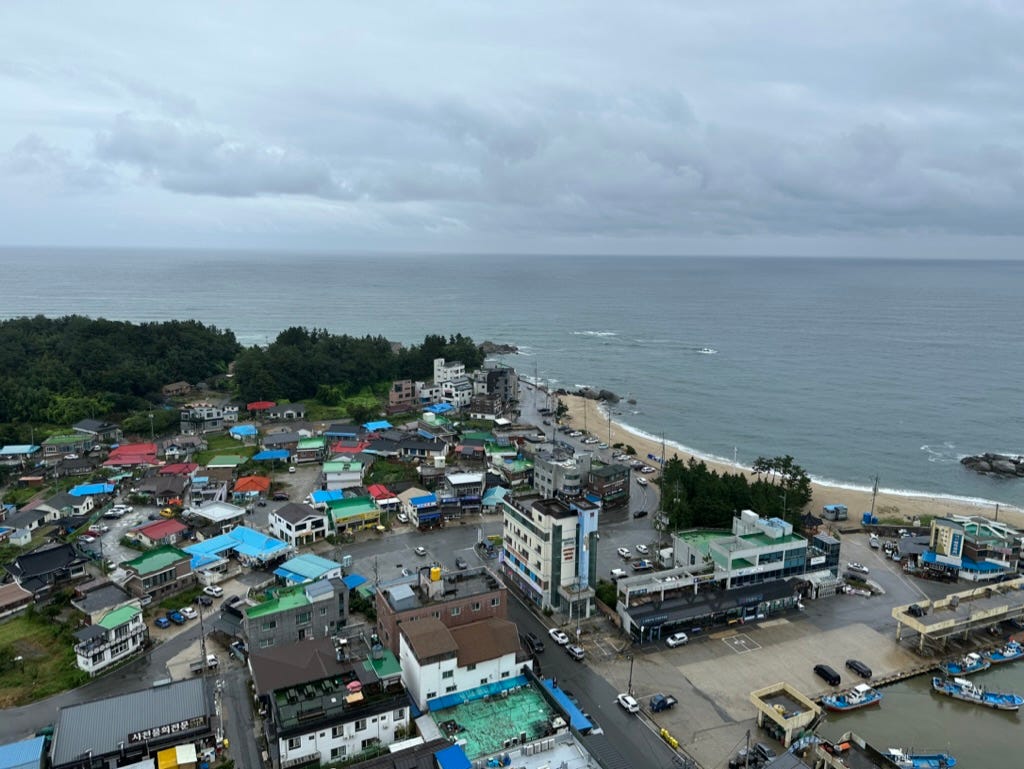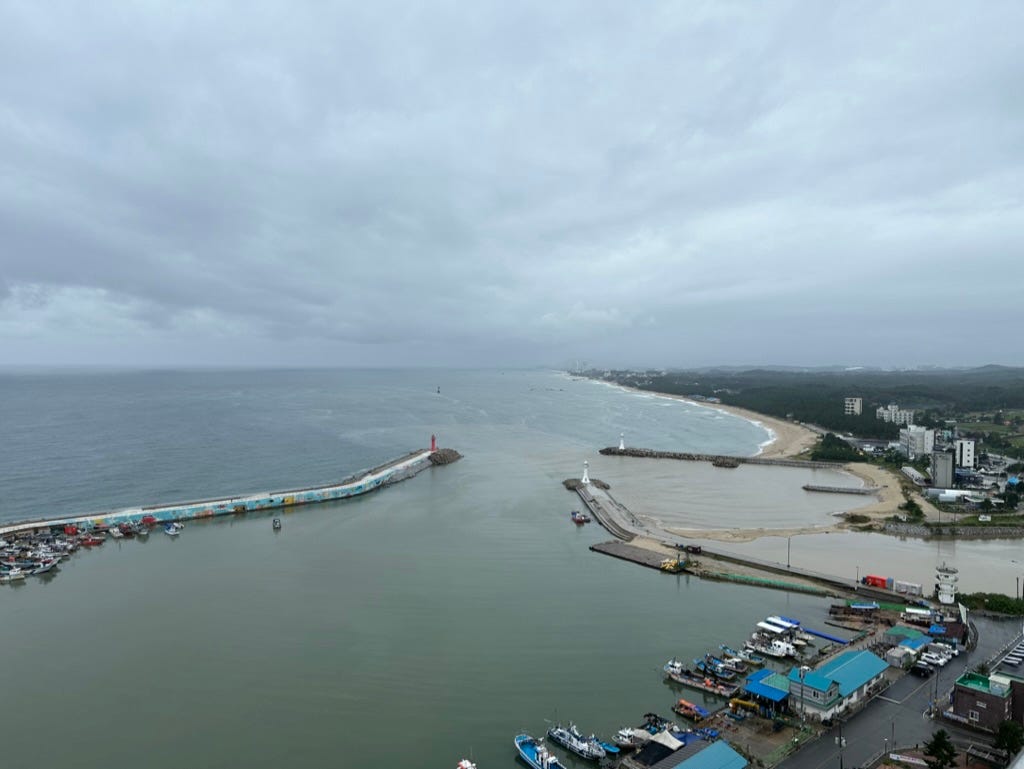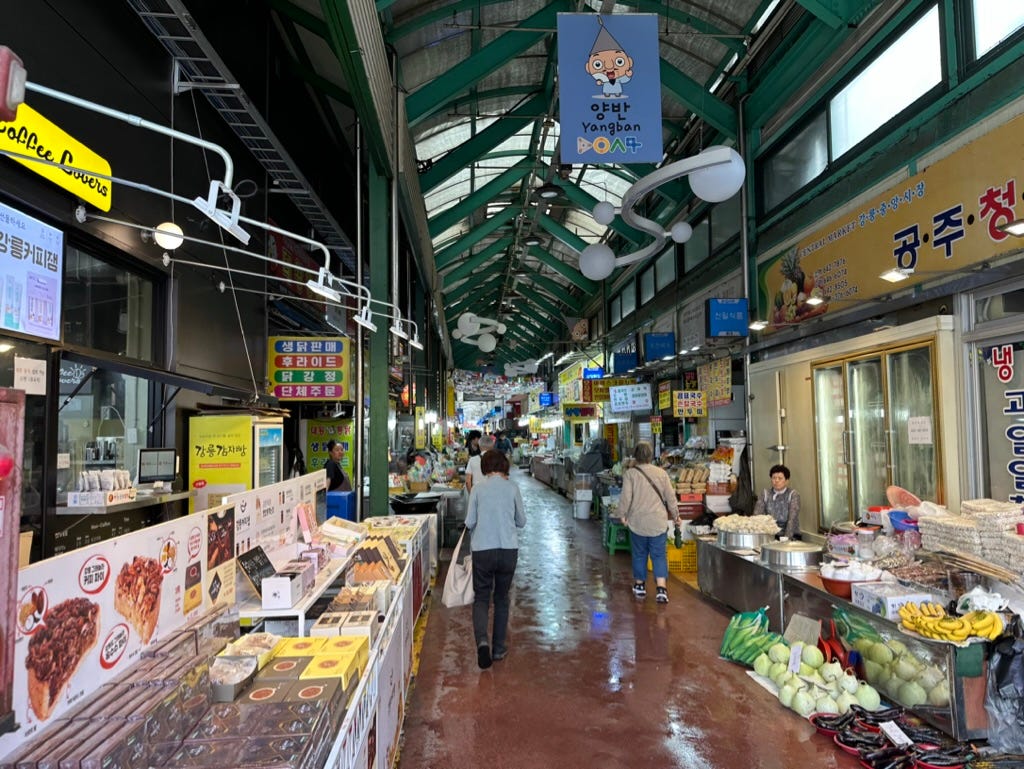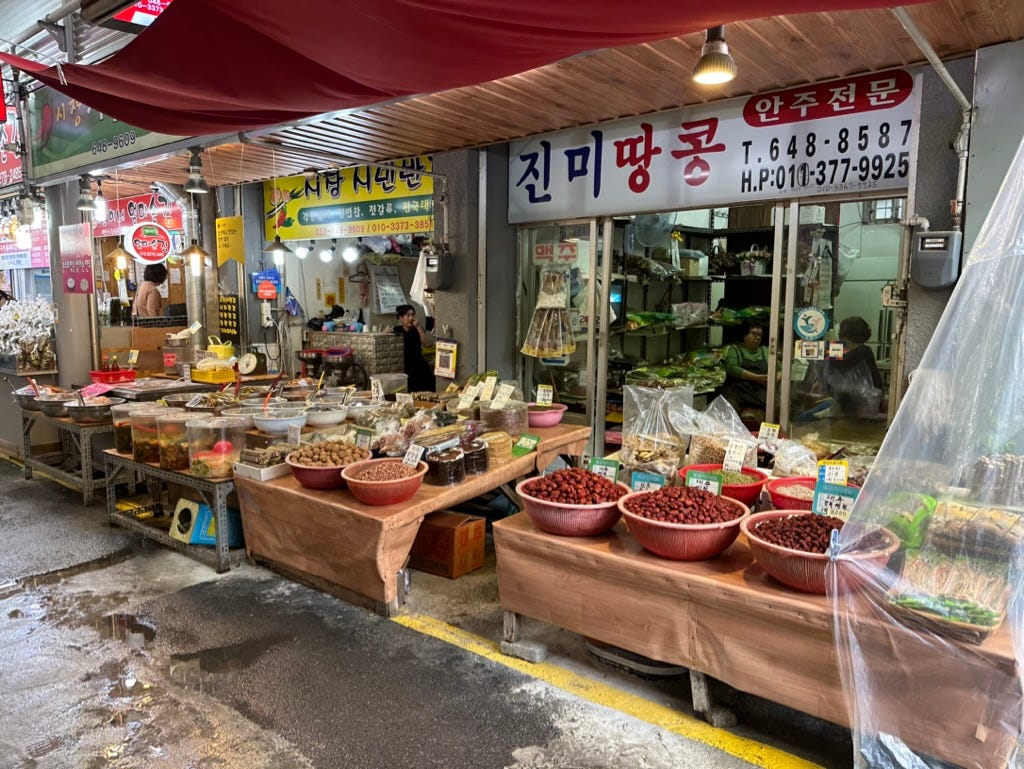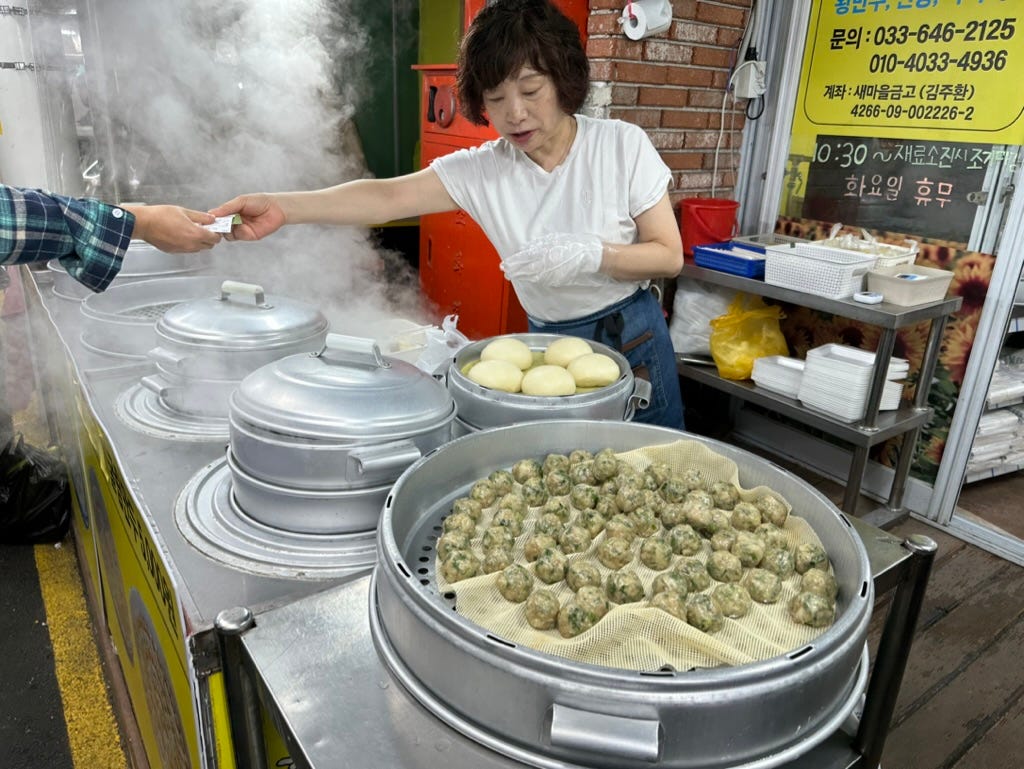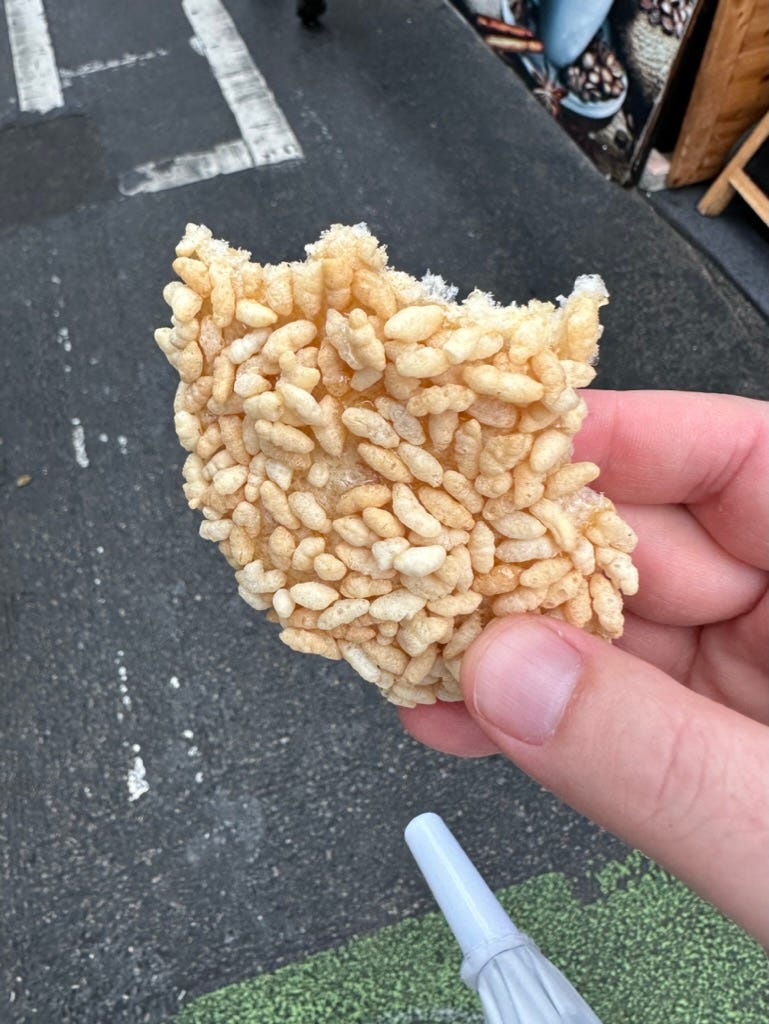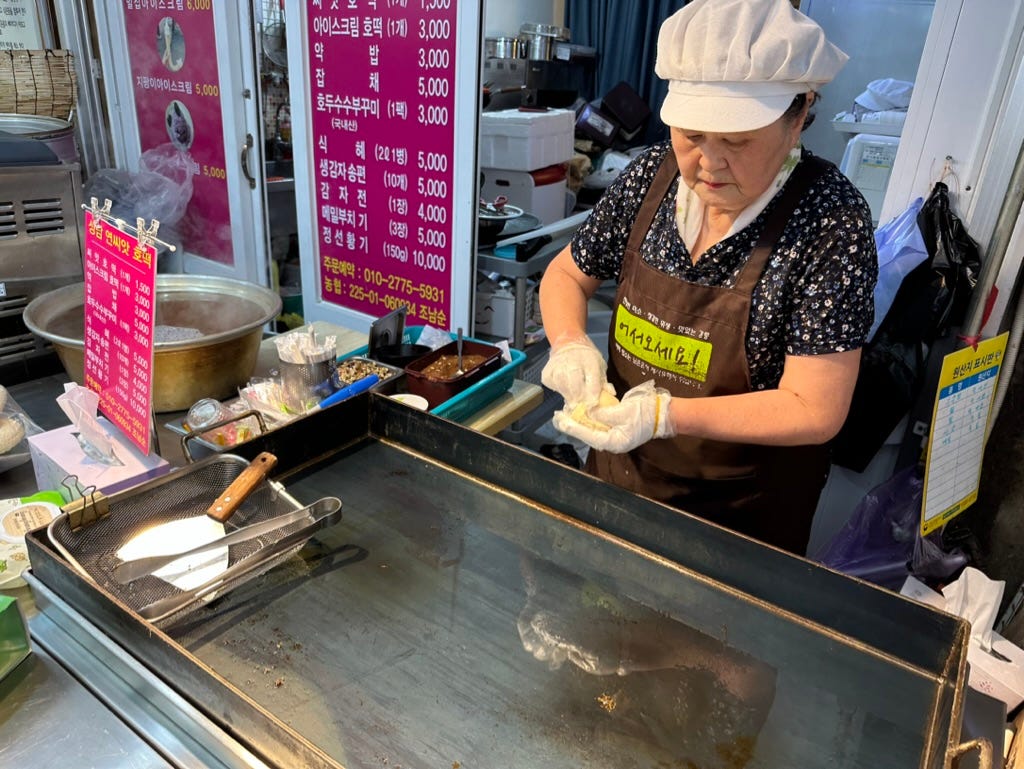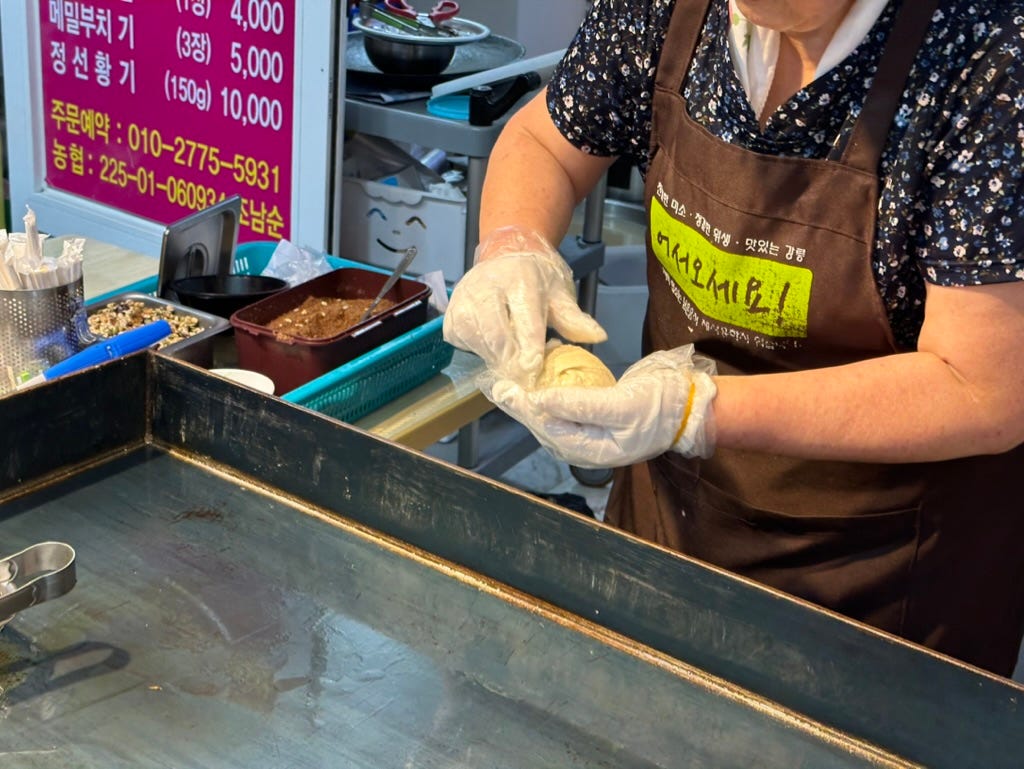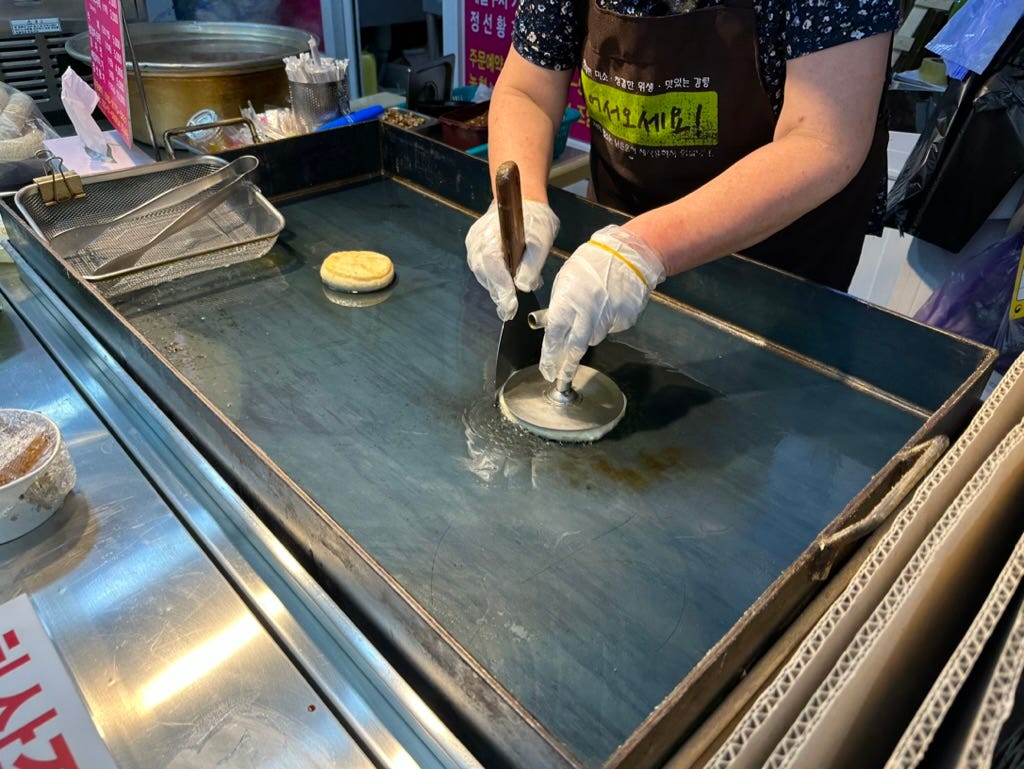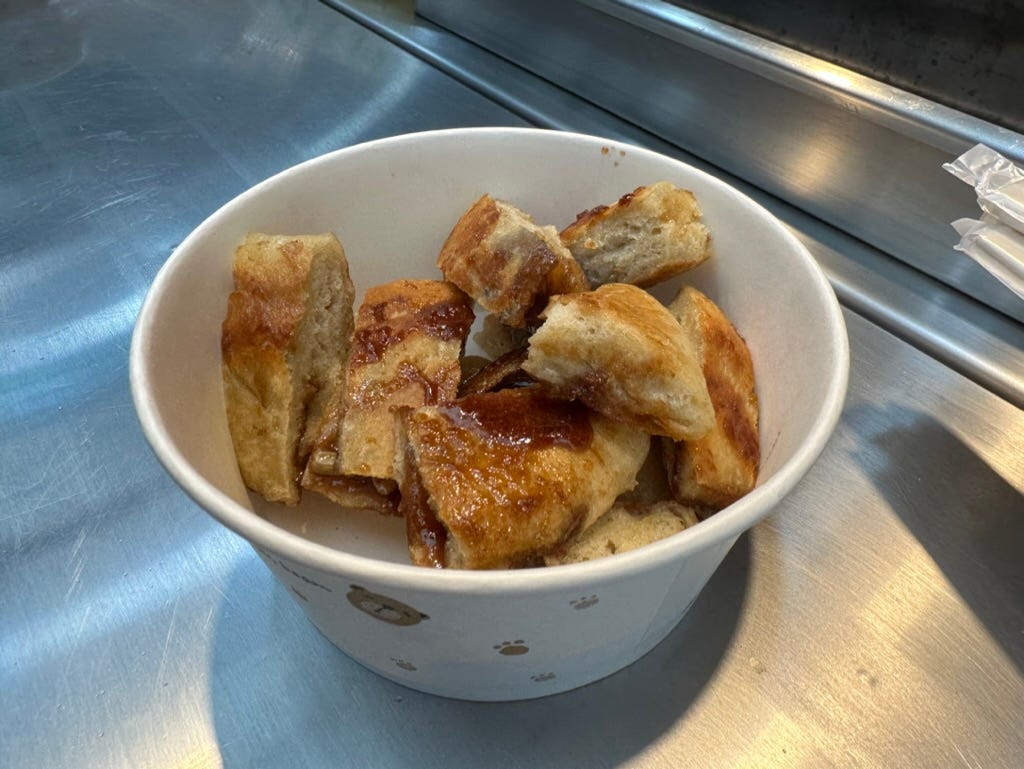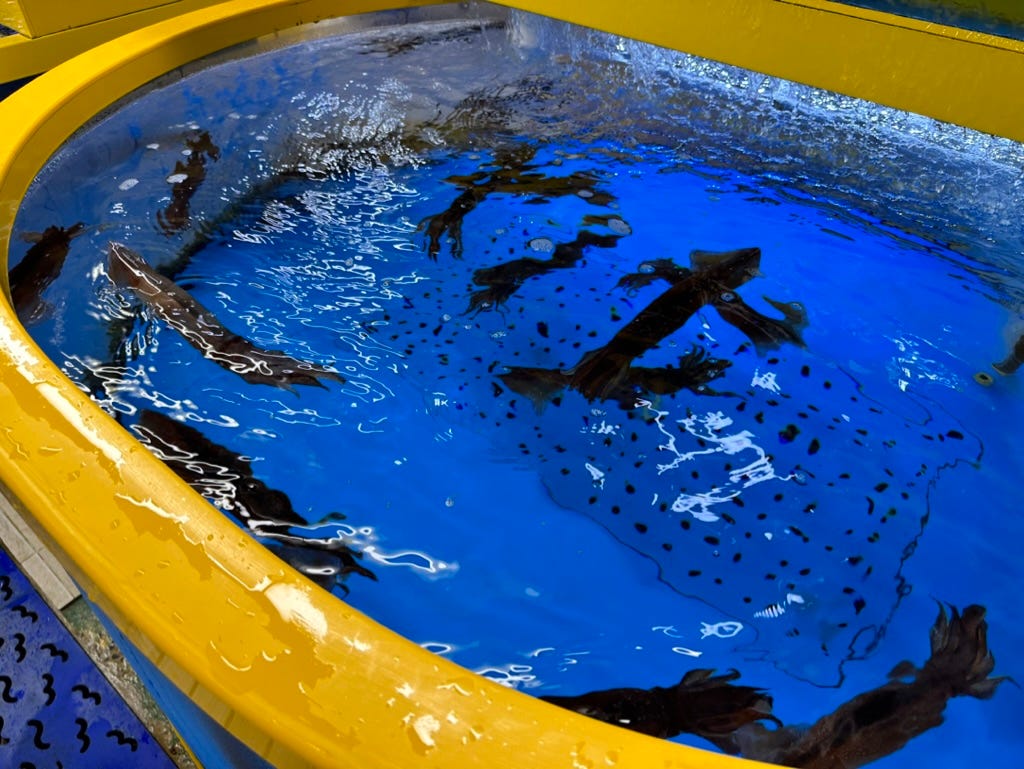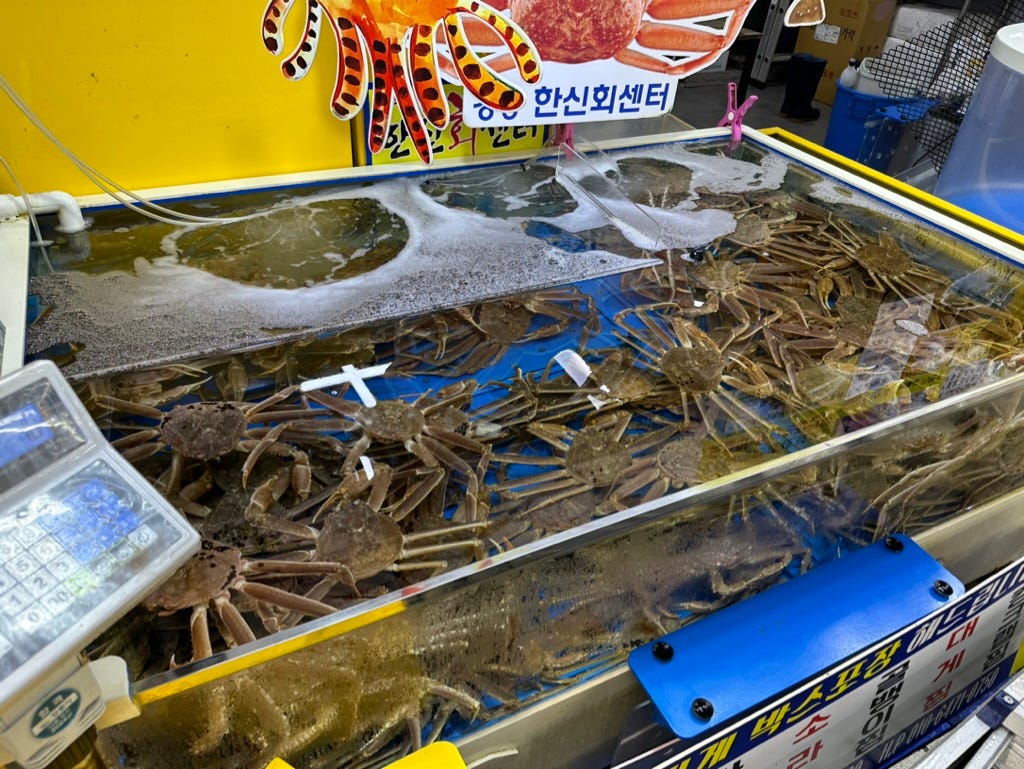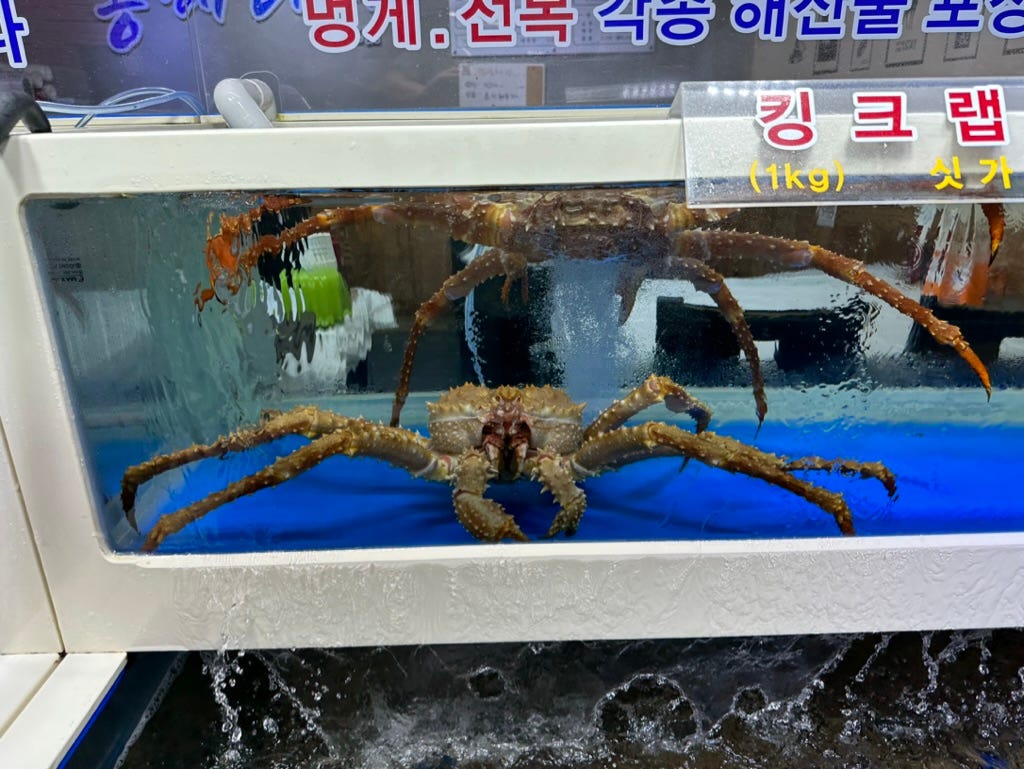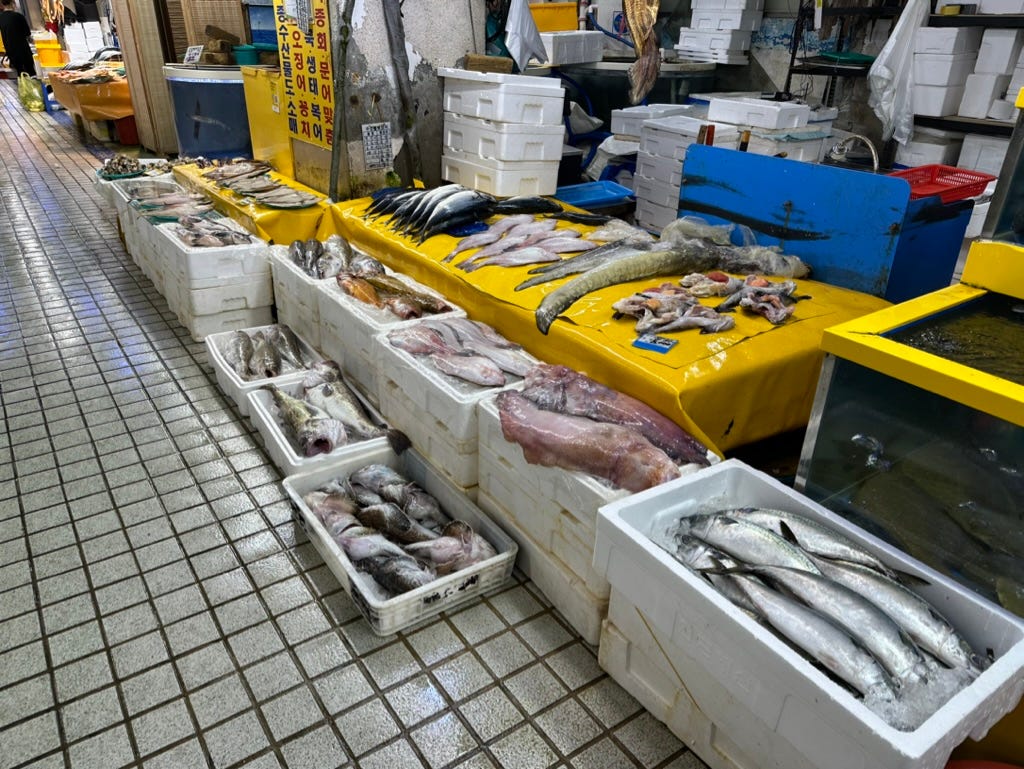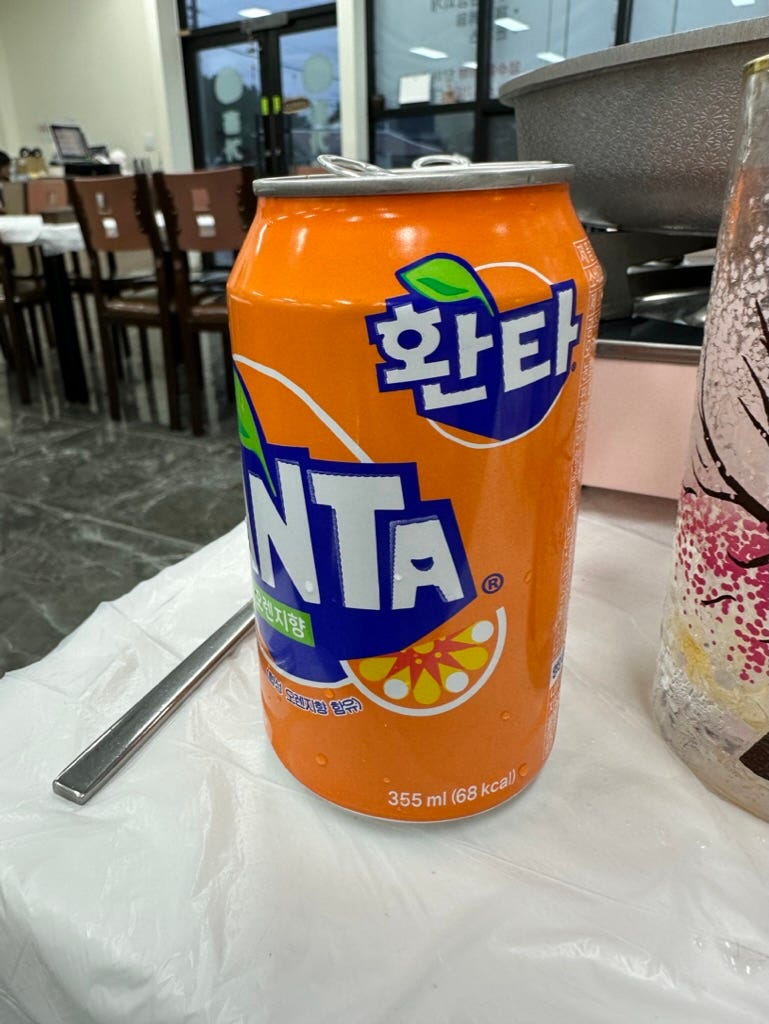South Korea - Chapter 7: Gangneung Style
The next stop on our tour of South Korea was Gangneung on the northeastern coast of South Korea. We took a two hour train ride to get there. It shouldn’t take that long but the train stopped three or four times along the way to pick up and drop off passengers.
September is the tail end of the monsoon season here so it’s raining off and on but still warm. Fortunately I came prepared for this by buying several dry fit shirts which make the humidity far more bearable.
As I have come to expect of all things Korean, the train station was immaculate as were the trains themselves.
If Gangneung Style sounds familiar, it’s because you’re thinking of the South Korean music video Gangnam Style which actually broke YouTube by having more downloads than the integer type the YouTube developers had initially chosen could handle. It’s now been downloaded a staggering 4.8 billion times. That Gangnam is a wealthy section of Seoul. This Gangneung is an entire town with a population of 215,000 which is 1/25th that of the Gangnam area of Seoul.
Being a seaside town in South Korea means that Gangneung is a fishing village. Our view from the 22nd story of the residential tower in which we were staying gave us an excellent view.
What you see here is not the whole city by a long shot. It’s just the part where the fisherman live and work.
After we got settled, we used my new found ability to use the KakaoTaxi app to request a cab that took us into the city, specifically to the location of the Gangneung Market. This was a market much like the one in Uijeongbu: mammoth in size and covered to protect both patrons and vendors from the elements.
One difference from the market in Uijeongbu was that some of the walkways included older woman sitting on mats on the floor selling whatever they had most likely grown themselves. Because of the importance of titles when it comes to addressing those older than oneself, women up to about middle age are referred to as 아주마 (ah-ju-ma) which means “older woman”, while the truly elderly are generically referred to with the title, 할머니 (har-mo-nee) which means Grandma. Yes, despite the fact that they are not your grandma, you still call them Grandma. There are, as you’d expect, words for older man 아다시 (ah-da-she) and Grandpa (할아버지 (ha-da-bo-gee) as well.
This is true in Korean of virtually anyone older than yourself even by a single second. The younger of twin brothers would call his seconds-older brother 형 (hyung) which literally means older brother. But then it depends upon one’s gender as well. If you are female and have an older brother, the word is 오빠 (oh-pa) which also means older brother. Like grandma, this also extends to those to whom you are unrelated. That’s surprising because when it comes to aunts and uncles, there’s far more clarity in Korean than in English. From the title, you can tell if your aunt is the sister of one of your parents or the spouse of a sibling of one of your parents. My niece and nephew call my wife 고모 (ko-mo) when means my father’s sister. They call me 고모부 (ko-mo-boo) which means my father’s sister’s husband. If, on the other hand, your aunt is from your mother’s sister, she is 이모 (emo) and her husband is 이모부 (emo-boo). Your title makes it abundantly clear whether you are a blood relative or not. This ends our Korean lesson for the day.
Once again, the variety of things that could be purchased at the market boggled the mind.
It was once again time to enjoy some delicious street food, we first stopped for some dumplings.
Next was a vendor selling what can only be described as the Korean version of Rice Crispy Treats. In this case no marshmallow is used so they are lower in calories and not as sweet but they did not disappoint being filled with crunchy goodness.
That’s just one corner. They are circular, flat and about 5 inches across. I bought an entire bag of them (perhaps 8 or so) for 10,000 KRW or about $7.50USD.
Next we came across a woman making 혹독 (hokdok) which I mentioned when we went to Namdaemun Market in Seoul. This time, perhaps because we were there when the market wasn’t particularly busy or perhaps because the woman making them wished to maximize quality, we ordered and then had to wait while she made them fresh. While at first this seemed like a bother to us, it turned out to be a pleasure to watch her work. First, she grabbed a ball of dough and then weighed it (oddly enough) to presumably make sure she wasn’t giving us too much or too little.
Next, she made a depression in the ball and filled it with a cinnamon/sugar mixture.
She then closed off the hole she had made then rolled it back into a ball.
Finally it was time to put it on the grill and flatten it.
She put tremendous care into each step and I just new it would be delicious as a result. She flipped them countless times to ensure that it was evenly cooked.
Finally, the were done. She asked if we would like them cut up. I figured that would allow the molten lava that was the inside mixture to cool more rapidly so we concurred that cutting them up was a good idea.
She provided what amounts to long toothpicks used to eat the yummy morsels. I grabbed one and dove right in. My Mother-In-Law chose to use a pair of chopsticks instead. The woman giggled and said something in Korean I could not understand. My wife turned to me with a smile and said, “She thinks you don’t know how to use chopsticks.” Being quite adept at using them, I picked up a pair to demonstrate my skill. This incited another giggle from the friendly cook who, according to my Mother-In-Law, has an accent that indicates she is originally from North Korea. I have most likely just met my first North Korean. I did not ask the cook to confirm her status as a former North Korean because there’s a stigma in South Korea about North Koreans and I didn’t want to make the maker of such wonderful and delicious things feel anything but my gratitude.
After walking through most, but certainly not all, of the aisles of the market, we headed outside to the street at which point my Mother-In-Law somehow knew there was a big seafood market very close by. In fact, she was somehow certain it was located below the street level of the market we had just exited. Looking around we found the somewhat secret entrance and headed down a few flights of stairs into a fresh seafood wonderland.
Most of the seafood here is in salt water tanks which means it’s still alive. It looks more like a fish store than a fish market. That have everything from squid,
to some kind of big, flat fish,
to octupus (who are kept at the surface with nets and styrofoam - presumably to make it easier to grab them),
to crab,
to king crab.
And of course no shortage of various types of not-so-alive fish. Remember, this is a fishing village so all of this seafood most likely in the ocean the previous day.
Later we walked down to the fishing boats that endlessly lined the docks.
We later went looking for a place for dinner and found a restaurant to our liking. We were early so they were devoid of customers. The waitress, who was no doubt the daughter of the owners, seemed happy to have something to do aside from stare at her phone and listen to rap music in English. She seated us and we ordered.
I wanted a Coke but noticed that they only had Pepsi and Fanta Orange. Not wanting Pepsi I decided to try my Korean on the unsuspecting young woman by ordering a Fanta and a cup of ice. She seemed to understand my pronunciation of 얼음 (oh-rum) which means ice. But the look on her face made it clear that Fanta had confused her completely. My wife Jeannie said something to her at which point she smiled with the satisfaction that comes from hearing from someone who has more than a modicum of skill at speaking the same language you do. A moment later my Fanta, accompanied by a glass of ice, arrived.
As I stared at my can of orange soda, I noticed that in addition to the large logo in English, there was a smaller version of the logo in Korean. As I slowly sounded it out (화타) it became clear what I had missed. You see, there is no F sound in the Korean language. Thus it should come as no surprise that Koreans are not accustomed to hearing such a sound nor using it of course. That’s why the Korean name for Fanta is Hanta. This explains the confused look I received when I asked for a Fanta.
Despite my blundering attempts to use the apparently little and unsophisticated Korean I have spent endless hours learning, I’m very much enjoying the immersive experience of being here. Most of the text I see and the words I hear are in Korean which really does help me become even more comfortable with the language. My ability to read (or what would better be described as sound out) Korean text is far better than my ability to create, let alone speak, sentences. An attempt at Can you tell me where the bathroom is? might instead turn out to be Can I mombo dogface to the banana patch?



